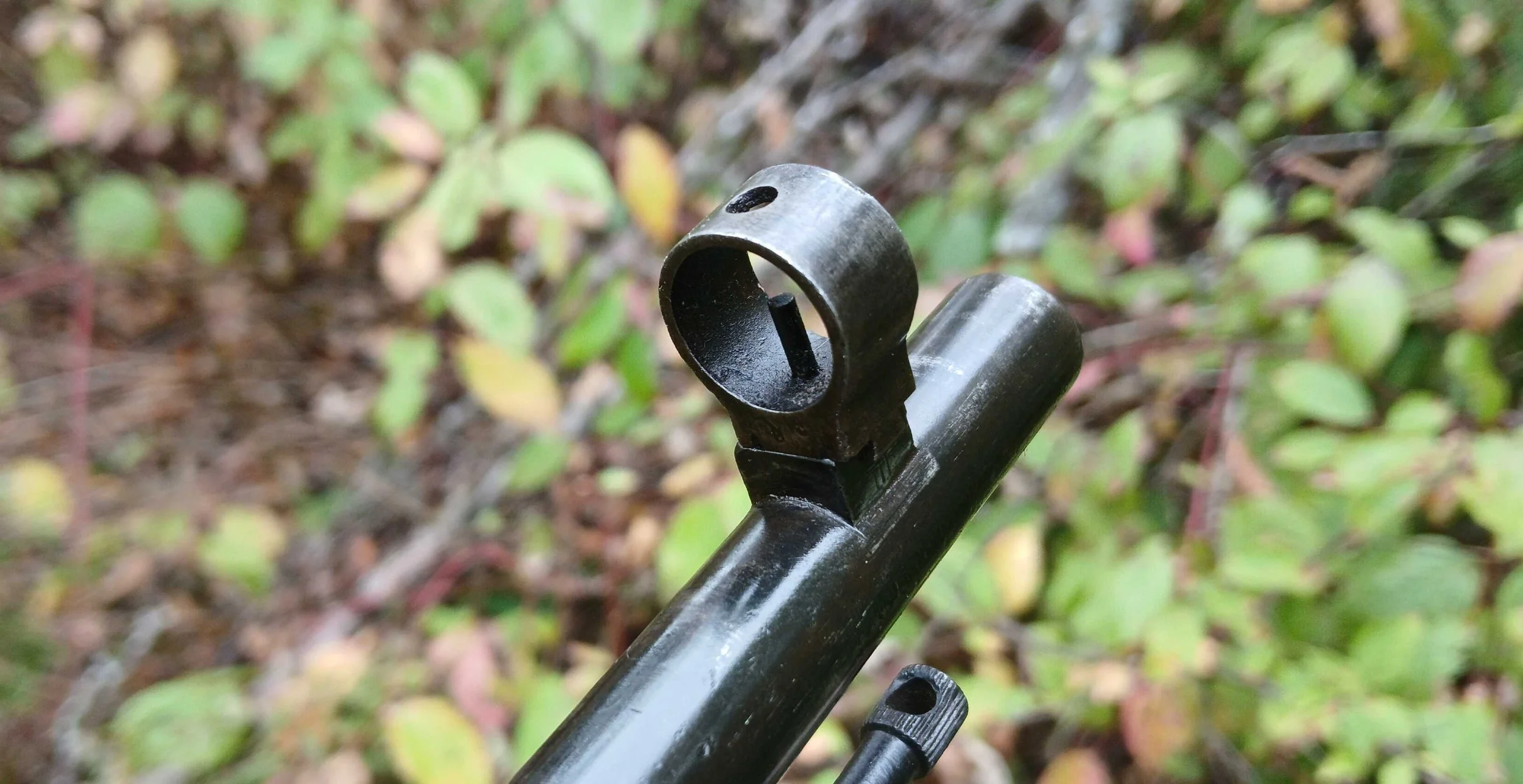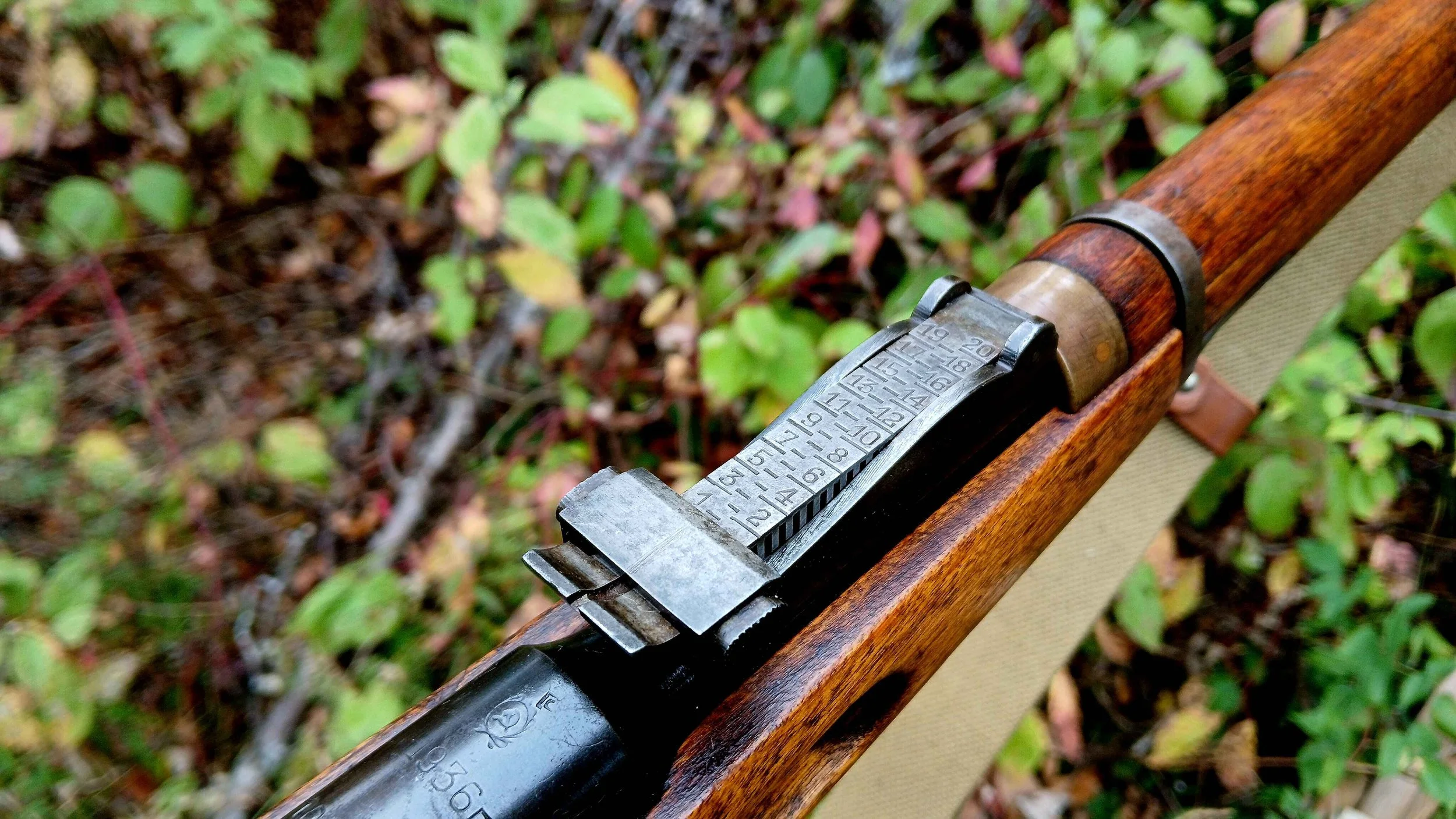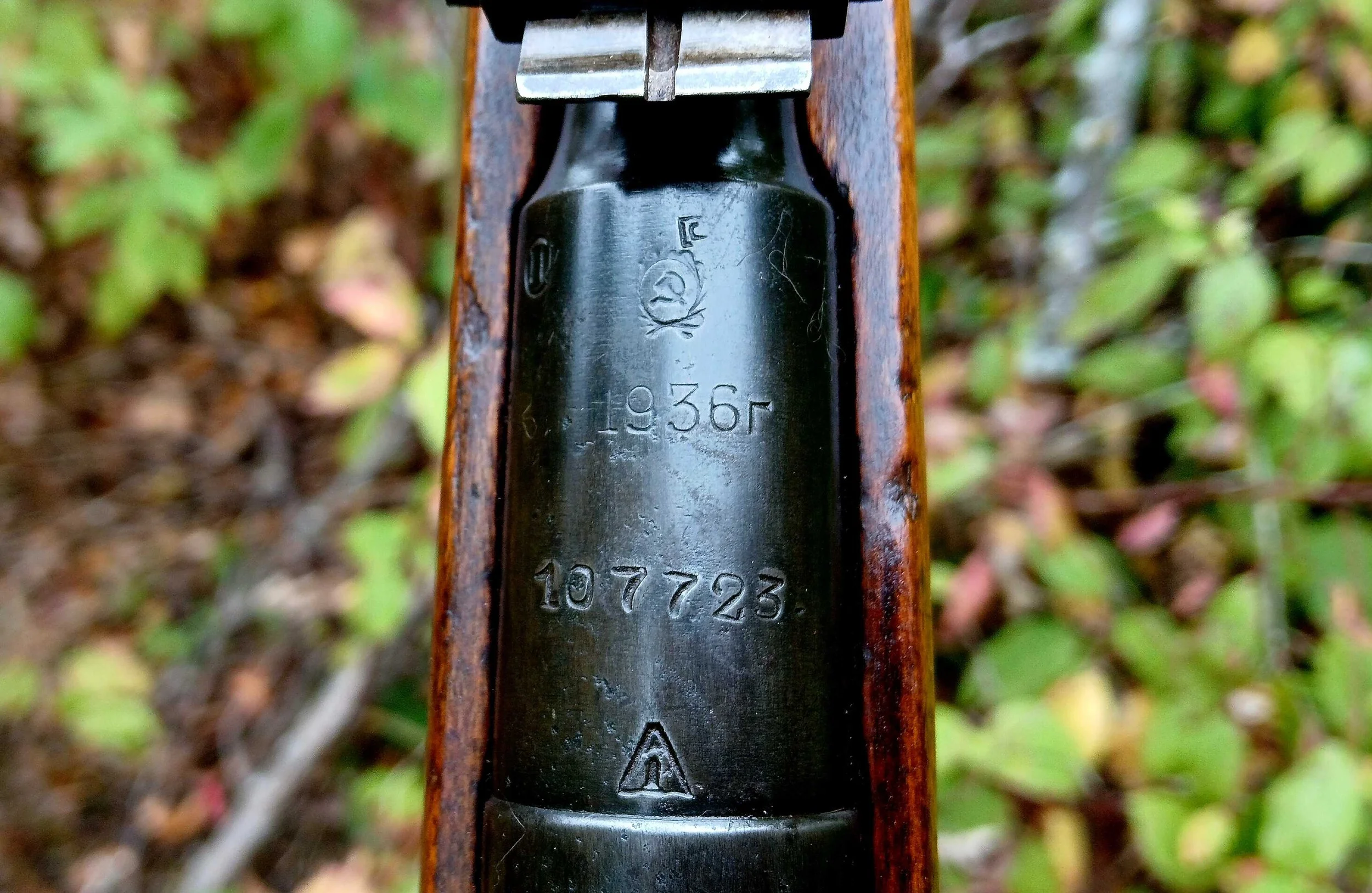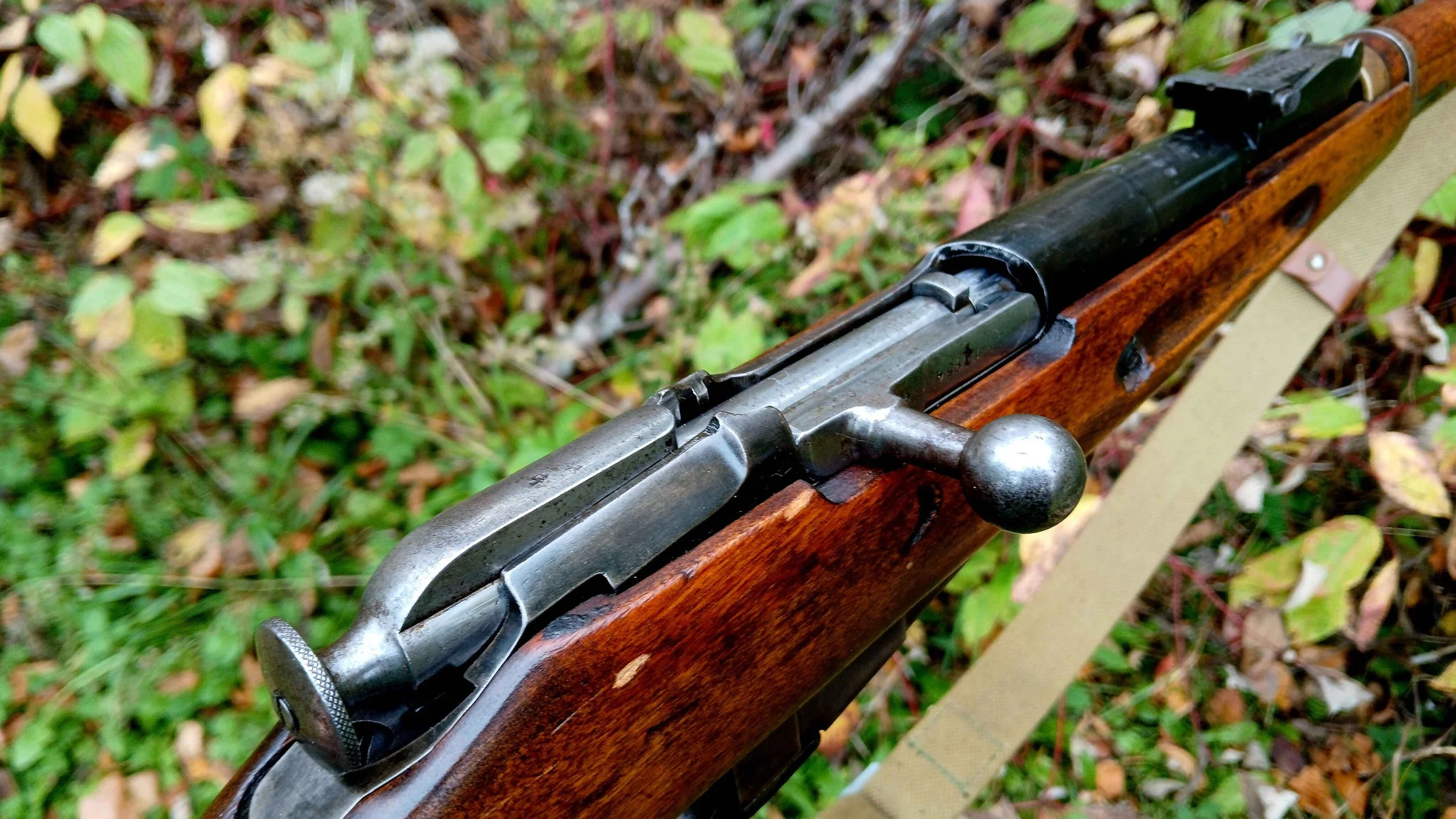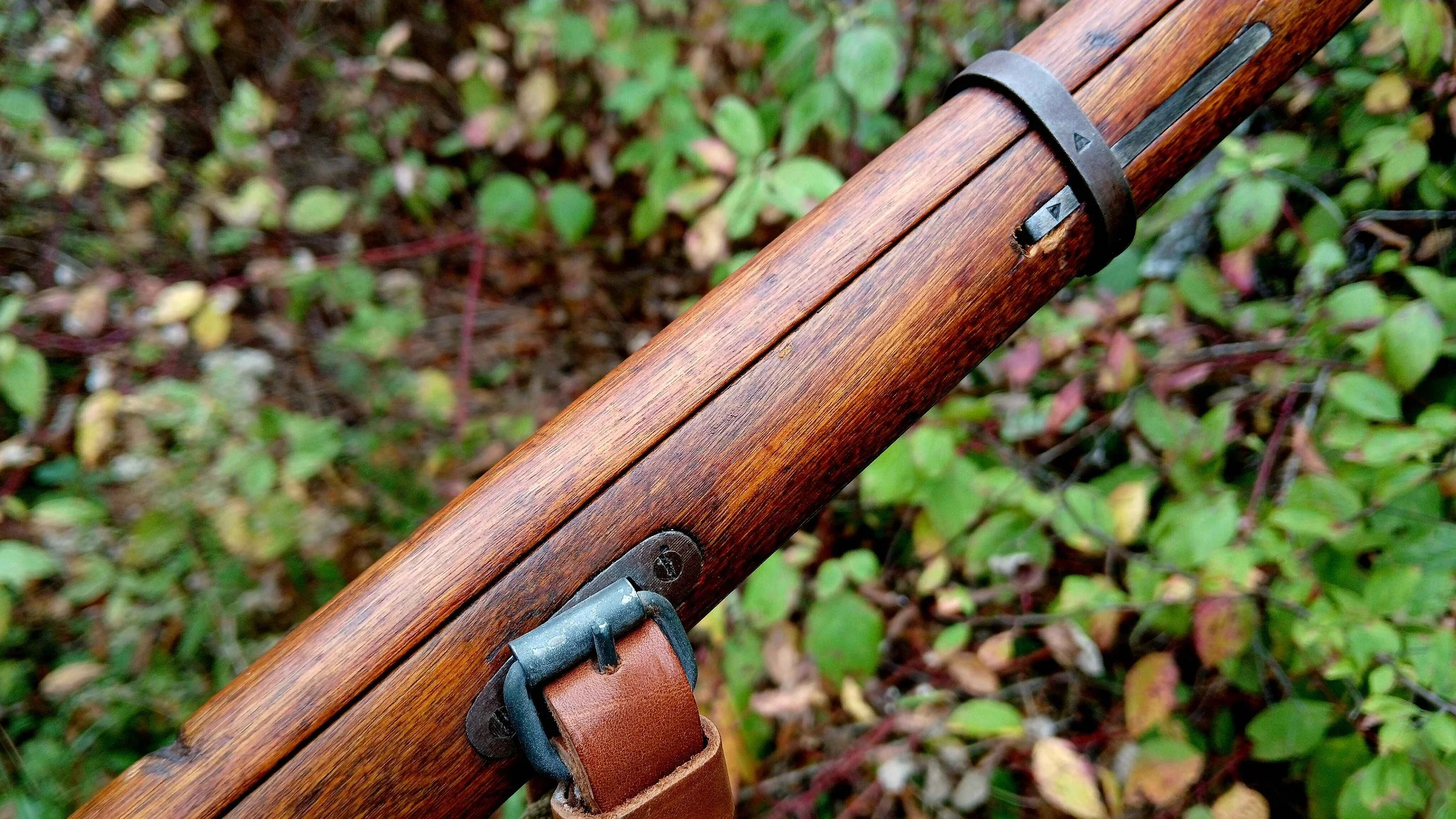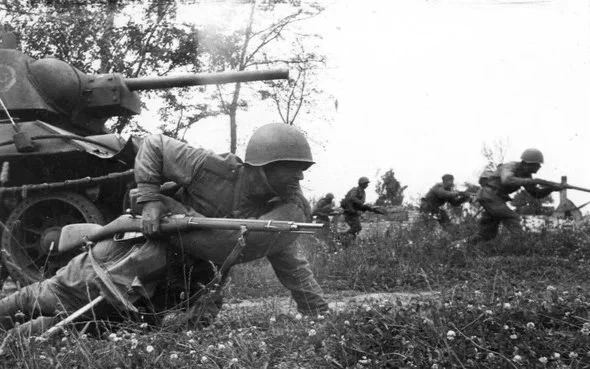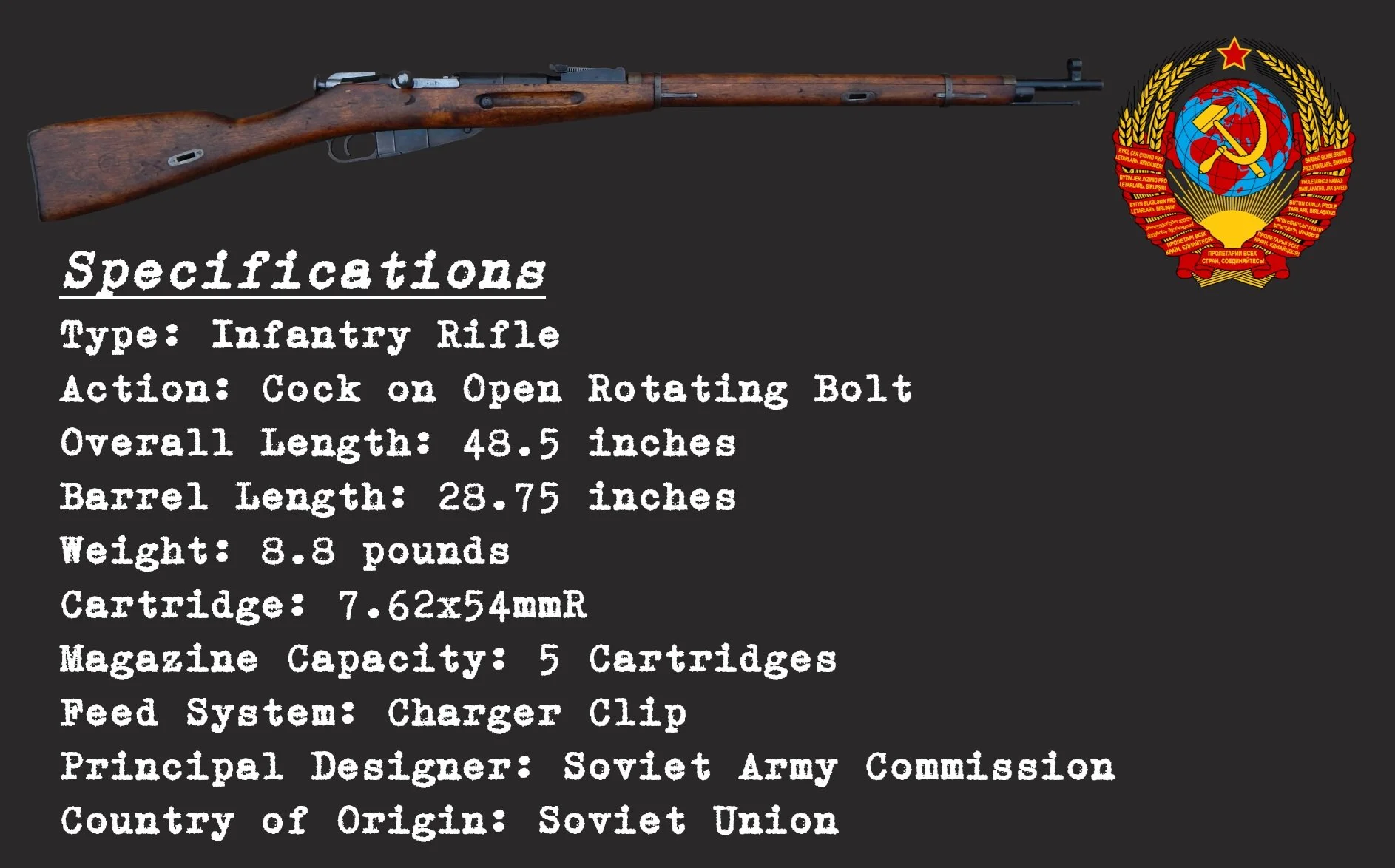Mosin Nagant M91/30
With the turmoil of revolution behind the newly formed USSR, Stalin’s regime turned to modernization of the nation’s armed forces concurrently to the industrialization of the country.
The History
The Mosin Nagant rifle had its genesis in 1891, with the adoption of the original 3-Line Rifle by the Imperial Russian Army. The first Russian smokeless powder rifle was a cumbersome full-length infantry rifle in keeping with the worldwide standards of the late 19th century, but by the end of the Great War is was apparent that the universal short rifle was superior on the modern battlefield.
Unlike the most other major belligerents of the First World War, the fighting in Russia did not end in 1918, with the ongoing civil war between communist and anti-communist forces consuming the nation until the final collapse of the White Russian armies in 1922. This, in turn, had an effect on weapons development and production in the country, and production only resumed on a significant scale under Soviet rule after the end of the conflict. At the same time, the Red Army Artillery Commission issued orders that the M1891 Dragoon variant would become the new standard issue, as opposed to the full length M1891 infantry rifle.
The redesigned front sight, consisting of a post with a globe type hood
Further modernization would follow, with the elimination of the outdated Russian Imperial measurement system and its replacement with the metric system, redesigned sights, handguards and barrel bands. The receiver was also redesigned, becoming a rounded type as opposed to the older “hex” style, intended to simplify production. The new design was officially adopted in 1930, with production gradually morphing from the Dragoon to the new M91/30 over the following few years, along with a program of conversion of older Dragoons to the new standard.
The new rifle would see its first significant use with Republican forces during the Spanish Civil War, when large quantities of arms and equipment were sent to aid the communists against Franco’s nationalists. Production would steadily ramp up as the decade came to a close and the international situation deteriorated, finally exploding into the Second World War when both the German and Soviet armies invaded Poland in September of 1939.
The rear sight, upgraded into a sturdy tangent type graduated from 100 to 2,000 meters
Attempts had been in progress to replace the Mosin Nagant with an autoloading design as the war drew near, with the initial Simonov design entering service in 1936 but proving unsuitable. In 1940 a finalized version of a Tokarev design had been adopted as the SVT40, but the German invasion of the USSR in June of 1941 put an end to those plans. With the Wehrmacht charging across the Soviet frontier and overrunning vast swaths of territory and destroying whole field armies, the need for the huge numbers of new rifles quickly resulted in the abandonment of the SVT as a standard infantry weapon. The M91/30 became the fallback, and remained the basic Soviet longarm of the war.
Primary markings are on the barrel shank, including Soviet property mark, year of production, serial number and Izhevsk manufacturer’s marking
Despite this, by 1944 it was apparent that the cumbersome M19/30 was growing obsolete, and production shifted in favor of the new M44 carbine variant, essentially just an M38 fitted with a folding bayonet for infantry use. This in turn was superseded by the semi-automatic SKS carbine in 7.62x39mm in the late 1940s. Two sniper variants also existed, one with a German designed PE scope and the more iconic variant with the 3.5x PU optic, which would serve until replacement with the SVD Dragunov rifle in 1958.
The action of the M91/30 is a standard Mosin type, differentiated from earlier models by its rounded receiver
The M91/30 was produced in enormous numbers and saw service around the world. Large numbers were provided as aid to other communist movements around the world both before and after the Second World War, seeing action from Korea and Vietnam to South America, the Middle East and Africa. It still appears today, with some even being spotted in use on the battlefields of Ukraine as a marksman’s rifle.
The Design
As a Mosin Nagant variant, the M91/30 is a cock-on-open rotating bolt action rifle, and is chambered in the 7.62x54mmR cartridge. It has a five round single stack internal magazine fed by charger clips, with an interrupter that is intended to negate the issues of overlapping the rimmed cartridges.
The cartridge interrupter can be seen with the bolt retracted, as can the unfinished receiver interior of a rifle that escaped the post-war Soviet refurbishment programs
The M91/30, while slightly shorter than the M1891 infantry rifle, still falls into the length category of an infantry rifle rather than a short rifle or carbine, and stands out amongst its contemporaries of the Second World War era.
This Example
The example in the reference collection was produced by the Soviet state arsenal at Izhevsk in 1936, and did not undergo post-war refurbishment. A possible Spanish-Civil War rifle, it maintains its pre-war Soviet finish, with a light oil coat on the stock, blued metal and bolt and receiver interior in the white. This is in many ways a prime example of the type, without any later alterations or wartime production shortcuts.
The improved barrel bands of the M91/30, as well as the classic “dog collar” sling attachments
Opinions
The M91/30 is, in the popular American imagination at least, the archetypical Mosin Nagant rifle. The weapon has a strong following in this country, in large part built up due to the large scale importations that occurred in the first decade of the 21st century. Numerous myths and internet memes surround the rifle, which may be addressed at a later date.
The pre-war stock cartouch, including a “CCCP” Soviet property mark
Objectively, the M91/30 is a solid, if unremarkable rifle. It retains all the flaws of the Mosin system (complicated mechanism, sticky mechanism, etc) are present, although the new sights are excellent and pre-war manufacturing is of a good standard. The rifle is longer and more cumbersome than the other standard service rifles of the major powers of the Second World War, and it is certainly less far removed from its Great War predecessor than other interwar updated designs.
A Soviet rifleman armed with an M91/30 during the fighting on the Eastern Front
Observed Values and Frequency
Updated: October, 2025
AVERAGE VALUE (USD): $500
FREQUENCY: Common
COLLECTOR’S NOTES: Unrefurbished examples are rare and command a premium over the more common post-war rearsenaled examples.

